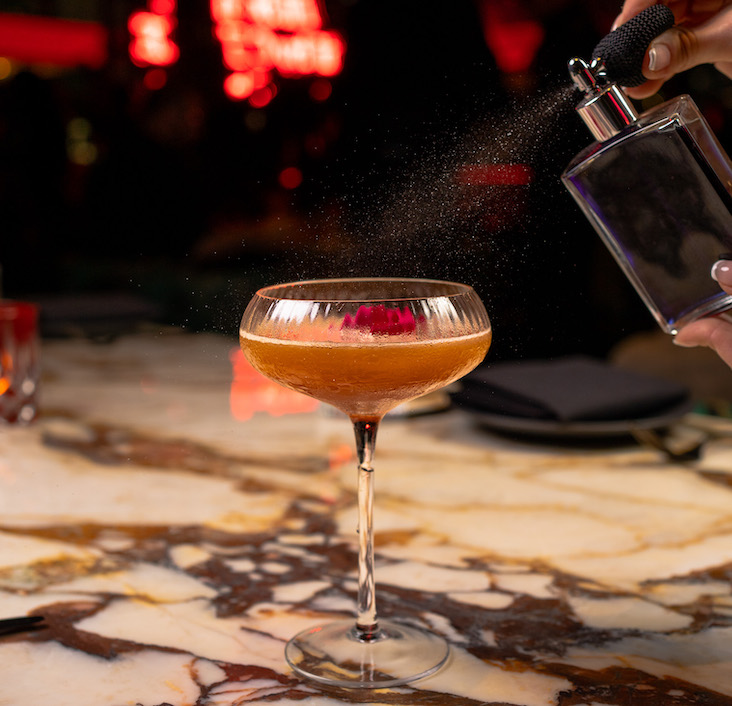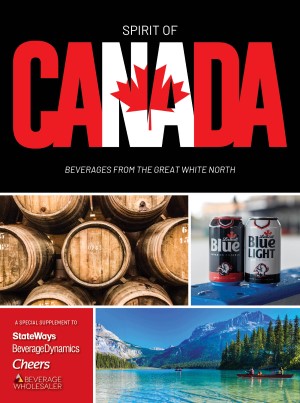A Learning Experience
Capital operator boosts beverage reputation with
a training program.
By Jack Robertiello
The Georgetown neighborhood of Washington, DC, is known primarily as the seat of the permanent government, a place where journalists, bureaucrats, international affairs specialists and socialites meet to swap political stories of the day. It’s also earned a reputation as one of the country’s premier bar and saloon destinations. Generation after generation of young and hungry (and thirsty) politicians have long made the trek along M Street and up Wisconsin Ave, seeking solace in the saloon rich part of town.
J. Paul’s trains its staff about its beer, wine and spirits, hands-on.
One of the long-term destinations has been J. Paul’s, so associated with the image of a whiskey-sipping, mahogany-dark saloon that the owners reinforce the connection with the place’s subtitle (A Dining Saloon). And while we hear again and again that sales of brown goods are down, J. Paul’s has managed to buck the trends somewhat and maintain its edge in beverages and service through a cutting-edge beverage training program that’s become so respected in the area that, in response to demand, the bar has thrown it open to paying customers.
Why Train
Beverage alcohol, as befits a dining saloon, has always constituted a major portion of J. Paul’s business; alcohol purchases make up about 37% of the restaurant’s sales. (That breaks down to about 55% beer, 30% spirits, 15% wine.) The inventory demands a lot of selling; they stock 60 single malts and 15 blended Scotches as well as 16 draft beers that change frequently.
But the quality of server knowledge needed to sell these beverages had wavered, especially as the labor market tightened up in the late 1990s.
That’s why in 1996, the restaurant initiated what’s now known as “U. Booze.” Beyond alcohol 101, the program constitutes a graduate level of spirits, suds and sauvingon blanc, and has become so appreciated among the staff that word of mouth has gotten not only to customers, but to insistent staff at J. Paul’s owner Capital Restaurant Concepts other operations—Paolo’s, Georgetown Seafood Grill, Georgia Brown’s, Old Glory All-American Bar-B-Que, Cin-Cin, Neyla and Zei, who have now been invited into the program by managing partner and beverage director Drew Jackman.
“It’s been a really big success for us, and gives us a big advantage,” says Jackman. “It enables us to get our staff up to speed and capable about what we serve and gives them a much better comfort level when they’re at the table,” he says. Jackman, who’s been beverage director for the DC-based company for two years, says that with most restaurant servers still in their early 20s, such programs as U. Booze gives Capital an advantage in educating and retaining staff; their server turnover is kept around the 20% area, he says, due in part to the education and opportunities U. Booze offers.
The direct results are also remunerative: Jackman says upper tier sales of spirits have benefited directly, as have staff tips.
The need for such continuing educational programs as these is obvious, Jackman says. “When you have people with a broad-based product knowledge at a place where the servers are young, that’s unusual. Our folks are mostly in their early 20s, single for the most part and not really aware of many of these things like port, single malt Scotch and single barrel bourbons. They don’t know about them, aren1t enthusiastic about them and don’t sell them.”
Back To School
J. Paul’s U. Booze has two levels, says Jackman. In the first, a sort of boot camp, all new hires (including servers, bar staff and managers) report to a mandatory two day, six hour a day course held three or four times a year. The course covers all the basics in wine, beer and spirits, including methods of production, product histories, service and uses. Students learn the basic vocabularies, how to taste beverages, what to look for, how to lead customers into orders and other details. Jackman based his program on such well-known training courses as the Sterling Vineyard School of Service and Hospitality program developed by Evan Goldstein.
The on-going monthly classes range from topic to topic, serving as both refreshers and in-depth enhancements. Anywhere from 15 to 40 attendees show up at each of these 60-75 minute classes, with speakers generally sticking to one category. This allows Jackman to employ enthusiastic suppliers. Recently, Maker’s Mark reps brought in a variety of ages of their bourbon, from so-called “white dog” raw spirit to one and two year varieties not ordinarily available, so that participants could not only compare Maker’s Mark to other bourbons, but also see how the aging process aids a spirit’s flavor and color.
Bourbon is in fact the biggest attraction in the short classes. (Old Glory stocks 80 bourbons, and the staff there has found the classes key to building sales, says Jackman.) And since introducing the classes to customers, they have been selling out in one week. (Proceeds go to a local area charity providing help to families of pediatric AIDS sufferers.) So many customers wanted in on the upcoming California red wine class that it will repeated twice.
“The staff loves it; they’re anxious to participate,” says Jackman. “It’s great for them and great for the guests who are served by them. And it gives them tools to sell and great energy after attending one of these sessions.” And even those who, like many students, snooze through class, benefit when in the weeds; instead of one resident Scotch or rye expert, there are likely to be a half-dozen on the floor at one time.
Distributors, distillers and brewers are regularly invited to speak, although Jackman has certain guidelines. “I ask them when they speak to give about half the time to their particular product and the rest of the time to promoting the category in general.” And they of course bring incentives: jackets, shirts, key chains, even tickets to sports events.
And the numbers, according to J. Pauls’ new computer tracking system, are proving the value of the regular training sessions. “Sales have been through the roof,” Jackman says. After a number of beer sessions, beer sales jumped 10 percent, with Sam Adams growing 24 percent.
Servers, including head bartender Matt Casey, have told of the benefits of simply being able to explain the subtle differences among the best-selling gins, for instance. “They’ll thank me afterwards, both verbally and monetarily.”




